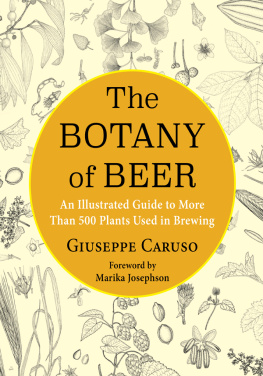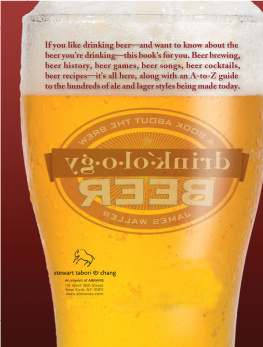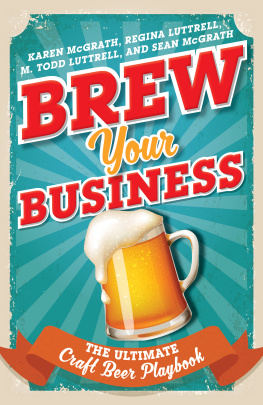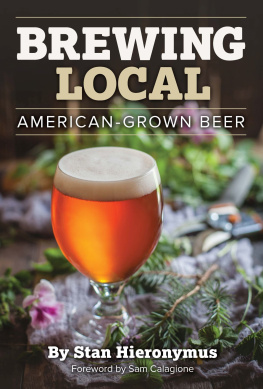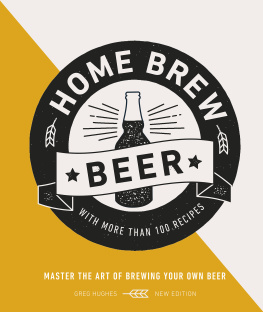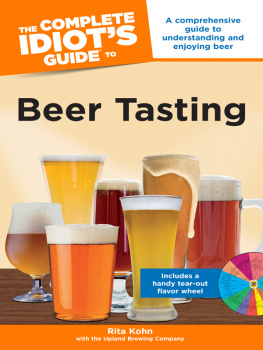Giuseppe Caruso - The Botany of Beer: An Illustrated Guide to More Than 500 Plants Used in Brewing
Here you can read online Giuseppe Caruso - The Botany of Beer: An Illustrated Guide to More Than 500 Plants Used in Brewing full text of the book (entire story) in english for free. Download pdf and epub, get meaning, cover and reviews about this ebook. year: 2022, publisher: Columbia University Press, genre: Romance novel. Description of the work, (preface) as well as reviews are available. Best literature library LitArk.com created for fans of good reading and offers a wide selection of genres:
Romance novel
Science fiction
Adventure
Detective
Science
History
Home and family
Prose
Art
Politics
Computer
Non-fiction
Religion
Business
Children
Humor
Choose a favorite category and find really read worthwhile books. Enjoy immersion in the world of imagination, feel the emotions of the characters or learn something new for yourself, make an fascinating discovery.
- Book:The Botany of Beer: An Illustrated Guide to More Than 500 Plants Used in Brewing
- Author:
- Publisher:Columbia University Press
- Genre:
- Year:2022
- Rating:4 / 5
- Favourites:Add to favourites
- Your mark:
The Botany of Beer: An Illustrated Guide to More Than 500 Plants Used in Brewing: summary, description and annotation
We offer to read an annotation, description, summary or preface (depends on what the author of the book "The Botany of Beer: An Illustrated Guide to More Than 500 Plants Used in Brewing" wrote himself). If you haven't found the necessary information about the book — write in the comments, we will try to find it.
From mass-produced lagers to craft-brewery IPAs, from beers made in Trappist monasteries according to traditional techniques to those created by innovative local brewers seeking to capture regional terroir, the world of beer boasts endless varieties. The diversity of beer does not only reflect the differences among the people and cultures who brew this beverage. It also testifies to the vast range of plants that help give different styles of beer their distinguishing flavor profiles.
This book is a comprehensive and beautifully illustrated compendium of the characteristics and properties of the plants used in making beer around the world. The botanical expert Giuseppe Caruso presents scientifically rigorous descriptions, accompanied by his own hand-drawn ink images, of more than 500 species. For each one, he gives the scientific classification, common names, and information about morphology, geographical distribution and habitat, and cultivation range. Caruso provides detailed information about each plants applications in beer making, including which of its parts are employed, as well as its chemical composition, its potential toxicity, and examples of beers and styles in which it is typically used. The book also considers historical uses, aiding brewers who seek to rediscover ancient and early modern concoctions.
This book will appeal to a wide audience, from beer aficionados to botany enthusiasts, providing valuable information for homebrewers and professional beer makers alike. It reveals how botanical knowledge can open new possibilities for todays and tomorrows brewers.
Giuseppe Caruso: author's other books
Who wrote The Botany of Beer: An Illustrated Guide to More Than 500 Plants Used in Brewing? Find out the surname, the name of the author of the book and a list of all author's works by series.

